Did you know nearly 40% of U.S. bird species are going down? By making a DIY bird station, you help protect local birds. You make a comfy place for birds and get to watch them up close at home.
This guide helps you set up a bird watching station. You’ll have feeders, nesting boxes, and birdbaths. Use wood to make your place feel natural and inviting for birds. Let’s start and make your yard a bird haven!
Benefits of Creating a DIY Outdoor Bird Station
Make a DIY bird spot in your yard. It’s good for you and the birds. You can watch birds from home. It’s fun to see them fly and play near your window.
Enjoy Birdwatching from Your Home
Seeing birds up close is great. Use feeders, baths, and boxes to bring many birds. Enjoy colorful birds and their songs.
Create a Natural Habitat for Birds
Make a bird-friendly place in your yard. This helps local birds. They find food, water, and shelter at your place.
Birds will love visiting your yard. It keeps them safe and happy. This also helps nature around your home.
Provide a Safe Feeding Area
A well-planned bird station protects birds from danger. Put feeders and baths in safe spots. This keeps birds safe from bad weather and enemies.
Building a bird spot is fun and good for birds. You’ll feel closer to nature. Get ready to make your own bird oasis.
Choosing the Right Location for Your Bird Station
Setting up your DIY bird station outdoors needs the right spot. It’s key for a safe and fun spot for birds and you. You want to avoid hitting windows and keep the squirrels away.
Put your bird feeder close to the house for good views. But make sure it’s at least three feet from your windows. This way, birds won’t hurt themselves if they fly into the glass. Or, if you put it farther, keep it more than ten feet from windows to lessen window strikes.
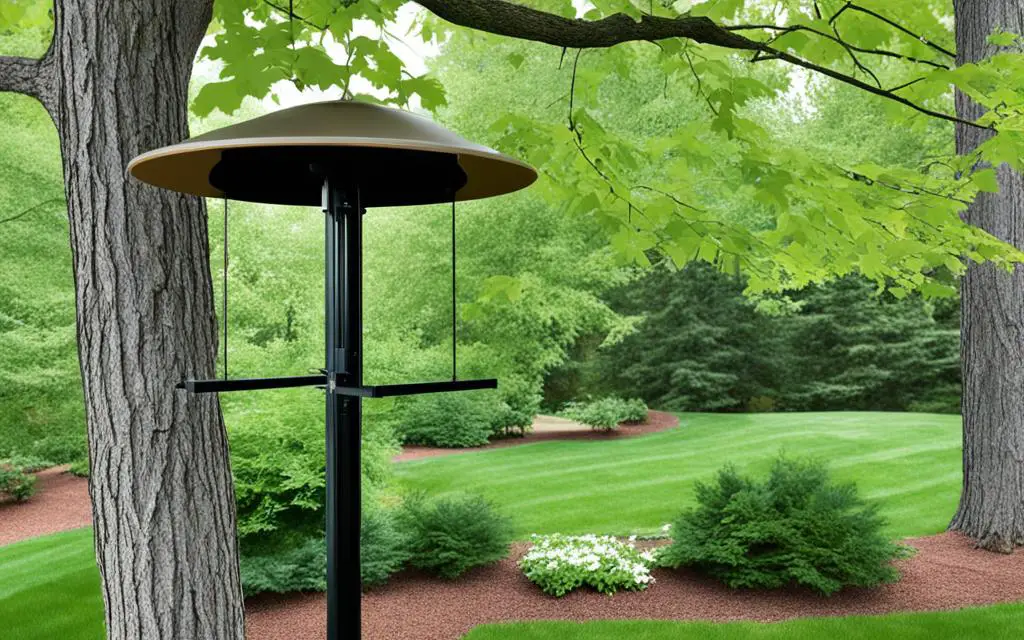
Squirrels are smart and keen to reach bird feeders. But you can stop them. Place your bird feeder far from trees, fences, or roofs, like at least ten feet. This will make it hard for squirrels to reach the feeders. Then, your birds can eat in calm.
Choosing a great spot for your outdoor bird station is worth the effort. With the right location, you avoid window strikes and keep squirrels away. Then, watching birds becomes a joy from your very home.
Essential Components of a Bird Feeding Station
Creating an outdoor bird station means having the right stuff for many birds. Include different feeders, water sources, and nests. This helps bring a lot of birds to your yard. Let’s see what you need for a great bird station.
Feeders for Different Types of Birds
Every bird likes to eat in its own way, so you need lots of feeders. Small birds love tube feeders because they have places to perch. Cardinals and jays prefer hopper feeders. These can hold more food for larger birds. Doves and sparrows like to eat on the ground, so platform feeders work well for them. By having a mix of feeders, all birds will feel welcome.
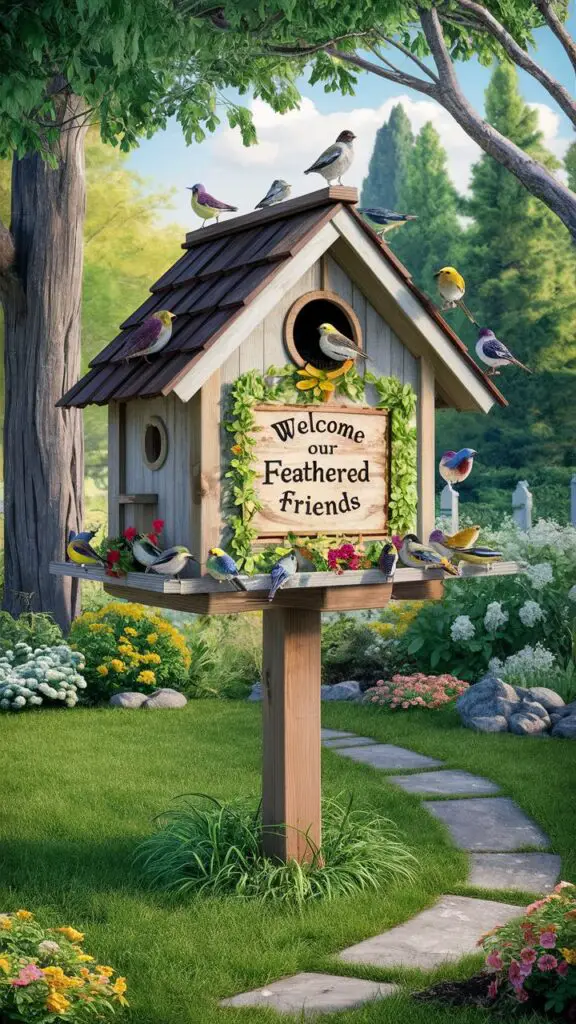
Water Sources and Birdbaths
Birds need water to drink and bathe. Adding water helps attract a bigger bird variety. Choose a birdbath with a smooth slope so birds can easily get in and out. Always keep the water clean to keep birds healthy and happy.
Nesting Boxes and Birdhouses
Nesting spots are great for birds and make your station better. Birds like bluebirds and wrens will use them. Make sure the boxes meet the needs of the birds you want. This makes your yard a good place for birds to live and raise their families.
Selecting the Best Bird Food and Feeders
When you set up an outdoor bird station, think about the food and feeders carefully. The right ones can bring all kinds of birds to your yard. We will look at great foods and feeders to invite many birds.
Black Oil Sunflower Seeds
Black oil sunflower seeds are a top choice for many birds. They have lots of good stuff for birds. Also, they are easy for smaller birds to eat. You will see cardinals, chickadees, and finches eating these seeds.
Safflower Seeds
Safflower seeds keep squirrels away and feed birds. They are perfect for species like cardinals and house finches. Plus, they leave less mess under your feeders.
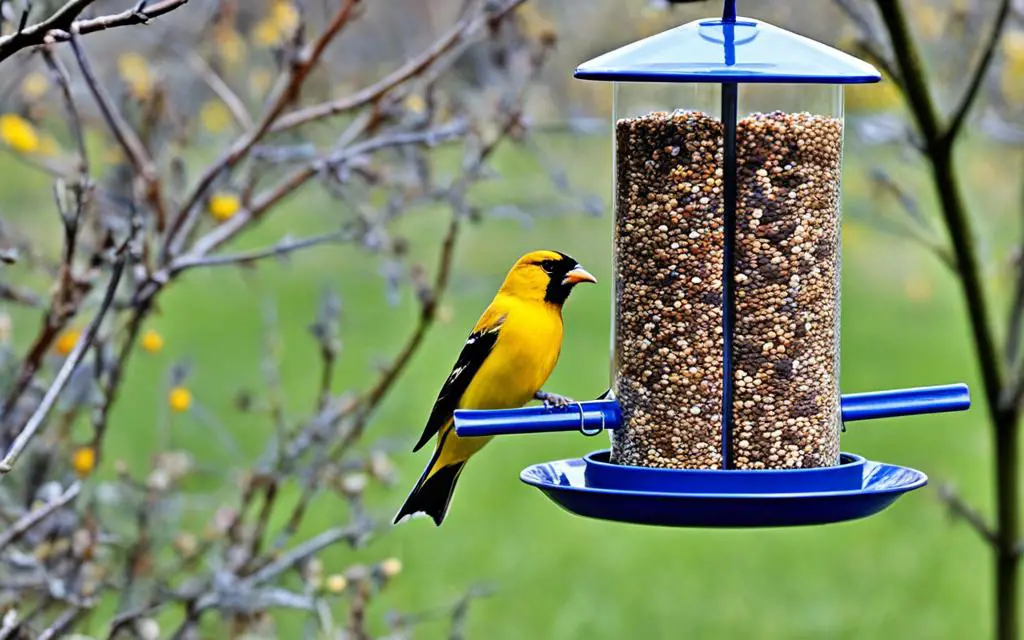
Thistle Seeds
Thistle seeds, or Nyjer seeds, are loved by finches. Use a thistle feeder to keep these tiny seeds in place. They are full of oil, great for active little finches.
Suet Cakes
Suet cakes draw in woodpeckers, nuthatches, and chickadees. They are made of beef fat, seeds, nuts, and fruit. In colder months, they give birds the energy they need when bugs are few.
Mealworms and Fruit
Try mealworms and fruit to see more bird types. Mealworms are a treat for bluebirds, robins, and wrens. Orioles and other fruit-loving birds enjoy fruit. Place mealworms in a dish and fruit in a special feeder or on a branch.
Test out different foods and feeders to see what your birds like. A mix of good foods will make your bird station a happy place for birds and you.
Step-by-Step Guide to Building Your DIY Outdoor Bird Station
Building a DIY bird station is exciting and fun. It lets you make a home for birds in your backyard. You just need some tools and materials. With them, you can make a great spot for watching birds.
Gathering Materials and Tools
Before starting, gather all you need. Get wood that lasts in the weather. You’ll also need screws, hooks, brackets, and more. Don’t forget a saw, drill, screwdriver, and measure tape.
Constructing the Base and Platform
The base of your bird station must be strong. Start with the base, made of the sturdy wood you’ve picked. Cut the wood to fit and screw it together well. This makes a solid platform for your station.
Installing Feeders and Accessories
Now, add the feeders and accessories. Pick feeders for the birds you want to see. Use hooks or brackets to put them on your platform. You also might want a water dish. You can use old dishes or containers to set up your station differently.
Think about how your feeders and accessories look. Try different heights and spots for the feeders. Add places for birds to rest too. Make your station pretty with things you like.
Now your station is ready for birds. Fill the feeders with good bird seed. Then, just sit and enjoy the birds. When you’re done, keep your station clean to welcome more birds.
Tips for Maintaining Your Bird Feeding Station
Keep your DIY bird station in great shape for your bird pals. Clean your bird feeders often with warm water and mild soap. Do this every few weeks, more if you see mold or dirt.
Refill the bird feed often with new seeds or suet. Always get rid of old or moldy food first. Watch the food levels, and add more when needed, especially in the morning or evening.
Remember to take care of the birdbaths too. Fresh, clean water is vital. Check the water every day and clean the birdbaths once a week. In the summer, change the water often for the birds.
Also, check your bird station for any damage regularly. Fix cracks or loose parts immediately. This will keep your bird station safe and fun for your feathered guests.
Attracting a Variety of Bird Species
To make your backyard a bird paradise, it’s key to welcome many bird types. You can do this by offering various foods and making a space where birds can eat at different levels. This way, you make sure all kinds of birds feel at home at your place.
Providing Diverse Food Options
Giving different bird foods is important for many birds to visit. Some birds like seeds, while others go for suet cakes or fruit. Try a mix of foods to see what birds in your area prefer.
Creating a Multi-Level Feeding Area
Having many places to eat helps too. Birds that normally eat off the ground will enjoy low platforms. And birds that like to perch high will be happy with feeders at different levels.
Place bird feeders near the ground for ground-loving birds. Use higher feeders for those that like to perch. With this setup, you’ll have lots of different birds enjoying your outdoor space.
Preventing Common Problems at Your Bird Station
Setting up a bird station means you need to think about problems. For example, stopping squirrels from bothering the birds. You also want to keep birds safe from hitting windows. A few easy tricks can make your bird spot safe and nice for them.
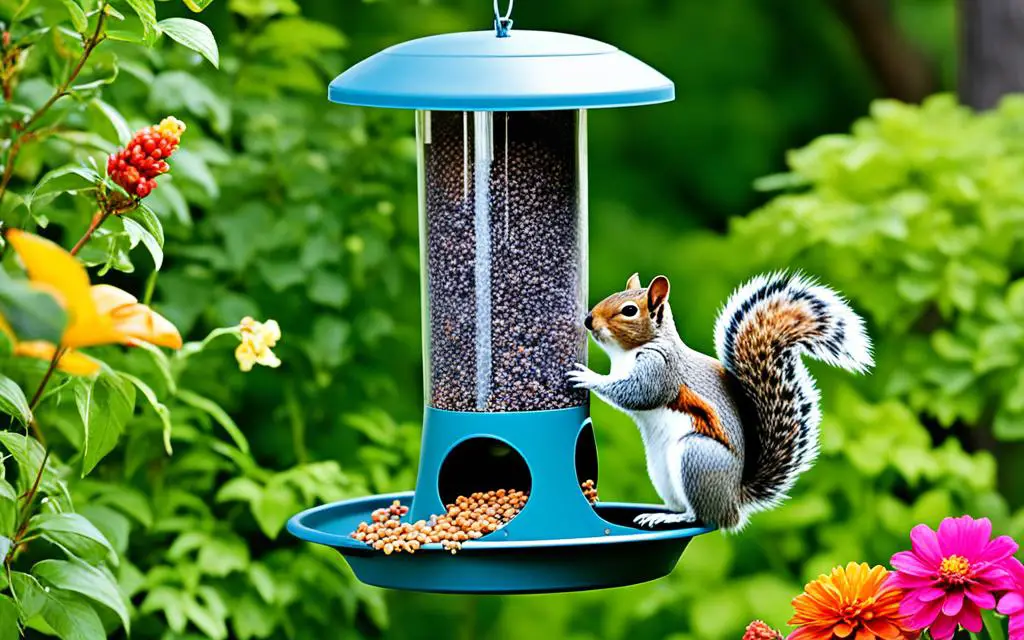
Keeping Squirrels and Other Pests Away
Squirrels love bird food and can scare the birds away. Ways to keep them off are using special bird feeders. These have things like moves when a squirrel lands on it or are hard for squirrels to get into. You can also add curved guards to the posts the feeders hang on to stop squirrels going up.
Put your feeders where squirrels can’t jump to, like far from trees. This helps keeps the food just for the birds.
Protecting Birds from Window Strikes
Birds sometimes fly into windows and get hurt. You can make the windows safer by putting stickers or lines birds can see. Or you could add special screens. Placing bird feeders really close or very far from windows can also help. This way, either the birds won’t hit hard, or they won’t get hurt if they do hit.
By taking care of these problems, your bird place stays safe. Enjoy watching the birds at your station. You’ve made it a great spot for them with safe feeders and windows.
Enhancing Your Bird Station with Natural Elements
Add natural things to your bird spot. This makes it a nice place for birds. They get more food, homes, and water. Then, more birds will come, making your spot lively.
Planting Bird-Friendly Vegetation
Planting local bushes and flowers can help birds. Berries and nectar flowers like columbine bring food. Cedar trees give birds a place to hide and nest.
Add trees, bushes, and plants in layers. This helps create a home-like place for birds. It also makes your yard more alive and diverse.
Incorporating Water Features
Birds need water to drink and clean. Adding water brings more bird types to your spot.
A pond, fountain, or birdbath will do. The sound of water also attracts birds. It doesn’t need to be big. What counts is that the water is kept clean and safe for birds.
By adding plants and water, you help birds thrive. This makes your yard a fun place to watch birds. And you help protect these amazing animals too.
Adapting Your Bird Station for Different Seasons
I love making bird watching fun in my backyard. I made a bird station that changes with the seasons. This helps all the birds find food, water, and shelter they need.
Winter is cold, so I give birds suet and peanuts to eat. These foods keep them warm. I make sure they have water by keeping my birdbaths from freezing. Birds always need water, even in winter.
In summer, birds like a cool spot with water and shade. I put out fruit and flowers that hummingbirds love. It makes my yard bright and full of life.
My bird station helps birds all year. They find what they need in every season. I am happy to help them, and I love seeing them in my yard.
DIY Outdoor Bird Station Ideas and Inspiration
When making your own bird station, let your ideas fly. You can create a wonderful space for birds in many ways. Use natural, modern, or reused materials to build a special place for them.
Rustic and Natural Designs
For a natural, rustic look, use wood and twigs. Make bird feeders and houses out of these materials. It will make birds feel happy and at ease. Use natural perches like branches to enhance the nature vibe.
Modern and Minimalist Styles
Like modern style? Then, use metal or glass for your bird station. Make bird feeders with simple shapes. A clean design or bright colors can look amazing and keep birds comfortable.
Upcycled and Repurposed Materials
Be creative with old stuff to make a unique bird station. Turn an old teapot into a birdhouse. Or use a chandelier for extra feeders in a sweet style. Anything from glass bottles to kitchen bowls can be turned into beautiful bird baths.
Source Links
- https://www.craftymarie.com/2016/10/homemade-wooden-bird-feeder.html
- https://ottawa.wbu.com/how-to-create-backyard-bird-feeding-station
- https://www.yardenvy.com/diy/attractbirdfeeders.htm

My name is Shane Warren, the author behind Your Bird Buddy – your ultimate guide to the wonderful world of birds! Unleash your inner avian explorer as we delve into a vibrant library of knowledge dedicated to all things feathered. From learning about diverse bird species from across the globe to understanding their captivating habitats and behaviors, I’m here to fuel your passion for these magnificent creatures. Not only that, but I also provide valuable insights on being a responsible and informed pet bird owner. Join our vibrant community and let’s celebrate the feathered wonders of the world together – one chirp at a time. And be sure to join our Your Bird Buddy Community over on Facebook!

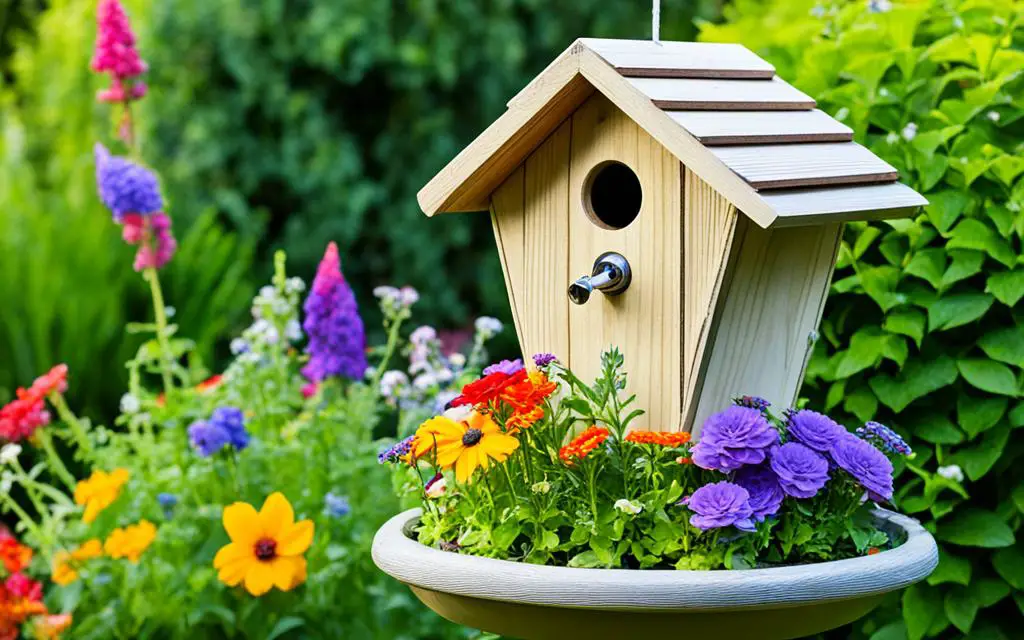
Comments are closed